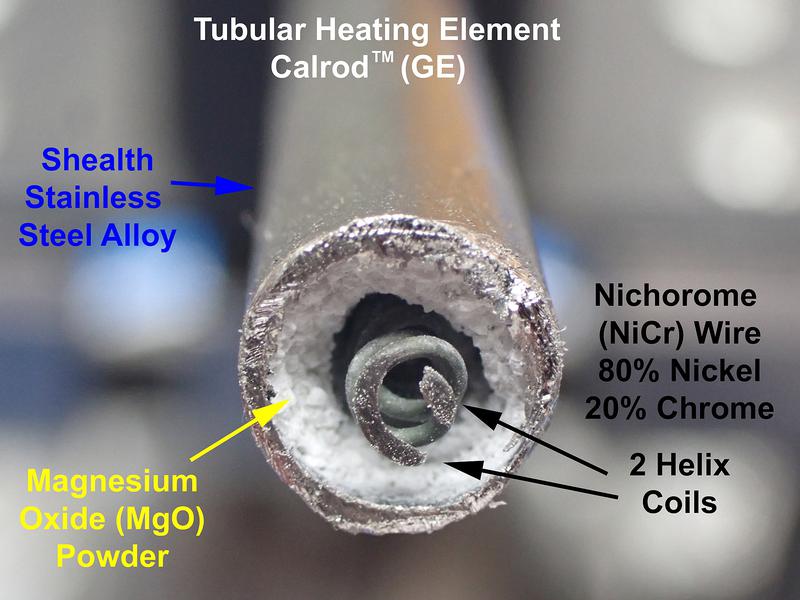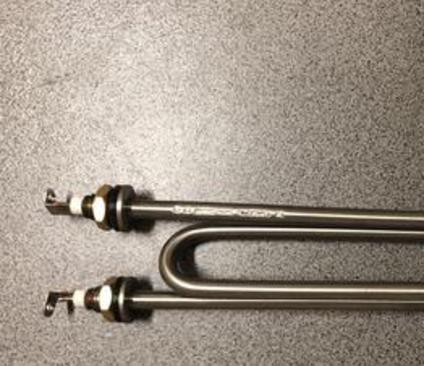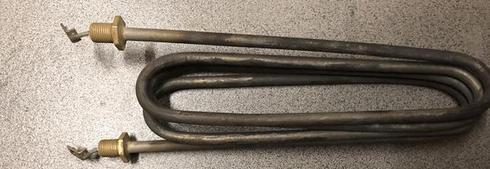Heat up times vs start up times
This is where many people get confused. They think the models that start making steam in 60 seconds is the start of their steam session. NO. It still takes about 7 to 10 minutes to heat up the room and get the latent heat to heat up the walls. I personally don't like the quick starting steam generators unless it has a high psi, at least 20 psi and they are the types with 3/4 inch pipes or larger. The first smaller tank that makes the steam start in 60 seconds on some models is super wet since it is not the same as the main tank. I prefer to wait a few extra minutes for the main boiler to heat up so I can have the dryest steam possible.
As far as heat up times, having a ceiling over 7 foot can also be a problem if the steam is too wet. It is super hard to get the steam down when there is a steam trap at the top of the ceiling. If someone has an 8 foot ceiling, that 12 inches under the ceiling is holding the valuable heat that normally would make the steam room hot. A Kona fan can do the trick as well to bring it down. Having whole body steam therapy is something that once people try that, they don't usually go back to being in a steam room with just their upper body being hot and their legs and feet stay cold. A Kona fan is the best thing I have found to make the steam room in equilibrium.
Also, by going up a killowatt size if you have an 8 or 9 foot ceiling, this just makes more heat travel to the top of the room and the steam is wetter than it should be and the room will be a lot hotter since more steam is coming out per minute but the steam cloud quality will go from good to fair. With a 10 foot ceiling, if upsizing and no fans, the quality goes from fair to poor.
If upsizing too much, too much steam coming out too fast can burn your feet as the steam is blowing to hard. Also, with single tank models, if upsizing to compensate for the higher ceilings, this makes much worse steam than doing it with a dual tank system.
Beware: most dual tank steam generator brands that have the 1 minute start up times have the smaller tanks at 15 or lower psi, not 20 psi which makes the drier steam with the least condensate.
Also, the goal is to heat the room up and fill it with steam without heating up the walls with too much condensate. Natural stone takes the longest to heat up. Some people want a very hot room that has less steam and some people want a cooler room that lots of steam where you can't even see the person across from you. A fiberglass wall room doesn't store much heat at all and is not conductive like ceramic and natural stone. A room using fiberglass has the best steam possible. You never have splash cold water on the walls.
Also, note that if you like a hot steam room going up a killowatt size will typically shave 10 minutes off the maximum temperature capability of the steam room.
Please take my steam quiz and I will pick out a steam generator based on your answers.
Note: if the heating elements are caked with limescale and mineral deposits, it will not heat up quick and give off an awful smell.
To avoid limescale and heater corrosion, I urge people to use surgical steel heating elements and if that's not affordable then stainless steel (not zinc coated or galvanized).
Surgical steel heating element should last at 30 years and you don't need to add a chemical in the tank to clean them every 90 sessions.
This picture shows what is inside the heating element in most steam generators. I urge people to get the surgical steel (304 grade) heating elements if the water is hard and has a high TDS.
This is a surgical steel heating element. The non-shiny one is a use one that has been used. Notice how there is no limescale crusted on the surgical steel element. These are 304 grade surgical steel. They are much more expensive but you don't have the maintenance work like you would on other types of heaters.
I urge those who are not going to use a water filter and water softener to only use a steam generator that has surgical steel. The 2nd best are regular stainless steel. They will last longer than the galvanized steel and I strongly recommend an auto flush as well as the filter and softener. The manufacturers usually will not honor the warranty if you don't do these things. You will almost always have to replace the elements at your expense. I have never heard of a 304 surgical steel element corroding so if you aren't going to use any of these 3 things to protect your generator, surgical steel heating elements as well as a surgical steel tank is what I urge people to research.
Those that don't want to get their heart rate up to 150 bmp too quick may want a dryer steam that doesn't heat them up to quick. It is very hard to heat my core temperature 3 degrees and maintain it if the steam is too wet and it makes my blood pressure go up too fast to the point I need to get out of the steam room. Let me know if you want a shorter or longer session in your steam room on my quiz.
Start-up Time and True heating times:
This is where it gets tricky. So many companies have said they have a 1 minute start up time. This does not mean it will generate full blast steam but may be referring to a smaller dual tank steam generator that produces a small amount of steam then shuts off after 10 seconds. This is cool when I want the steam to start immediately. Some steamers are instant that work similar to the hot water faucets that always have boiling water on tap that many people install in their sinks.
When I get home from a late night out, the first thing I want to do is go in my steam room. Well, if you have 2 generators it works double time especially with 2 steamers in each generator. For people that want a good steamer but want to sacrifice by waiting 15 minutes for it to heat up, these still give great steam. (note: many distributors trashed talked these lower end brands but when I used them they actually worked better than the more expensive fast start up brands but just took longer to start). I had to test all the different models to find out who was BSing me and who was just trying to sell their brand.
The latest models do not have the "always on" steam like the hot water dispensers in sinks. They have 2 boilers. The first one stays on for about 10 seconds while the larger tank builds up steam. They switch back and forth so it puts out constant steam. Most people prefer these to the ones that put out steam and you have to wait a few minutes for the steam to start back up again. I personally like a constant steam and don't like going from hot to warm for a few minutes and back to hot steam. If I want to freakin cool down I will take a quick shower or walk out for a minute. The latest steamers can put out steam within 1 minute with the double tanks. All this happens without people knowing since the steam comes out continuously. There is no clicking either.
Note: some steam generators work at full power until the temperature goes to a certain point and then the heater cuts back to 50% power to give a constant flow this way. These are the two types. Either having 2 tanks or a model that cuts back its power in half. This all depends on ones heat tolerance as the models that have this power variance are preferred by about 50% of the people and the other people want the dual tanks that can sometimes make the room so hot that it can cut the session time down.
Depending on how long you want your core body temperature to raise 3 degrees which is when most people want to get out of the steam room, this can help you decide which of these two types to buy. After knowing this, the 2nd thing I pick out is the wattage of the generator but not until the first decision is made. Many people just go by the wattage and buy a wattage that is too high for their steam room and get upset when the comfort is not like they expected and want to return the generator.
Steam room heat up times -
Many people don’t wait to wait 5 minutes for the boiler to heat up and then another 10 to 15 minutes for the steam to reach 100% humidity and the upper torso area to reach 114 degrees. This can be a 5 to 25 minute process depending on the steam room height and material used and if the steam is a wet or a dry steam.
There is a sacrifice many people aren’t aware of. The rooms that heat up the quickest have the highest condensate levels (unless oversized and then you have to wait for duty cycles). It can turn a 20 to 25 minute session to a 30 to 45 minute session. The rooms that take longer have a dryer steam but take longer to reach the 110-114 comfort zone. When you are in the steam room and you are looking at the temperature go from just say 70 degrees and you are waiting 20 minutes to get to 114 and then you want to steam bathe for 30 minutes, this wait time stops a lot of people from the joy of using their steam bath every day. If someone wants a better steam quality, the slow burn types or the 20psi dual tank steam generators can take the longest to heat up. But, once its heated up, nearly everyone is happy to wait an extra 7 or 8 minutes to reach the 110-114 sweat spot zone to get better steam.
Many people oversize their generators to get a faster heat up time. All this does is either burn your feet as it comes out or it heats the steam room so quick that the thermometer shuts off the steam too quick. Many people that oversize to get a quicker heat up time experience a heavy top thermocline and their legs don’t get the steam therapy they want because too much steam came out at once and rose to the ceiling and is in a steam trap. Atmospheric steam generators take a little longer than the 20psi models and the lower psi pressure cookers are the quickest as condensate holds the most heat. A good rule of thumb is if you know the gallons per 30 minute session. Some steam generators for the same killowatt size use 2.5 gallons and some use just over a gallon. The atmospheric types and the generators with the highest pressure relief valves release the least condensate and use the least water. You can see in our videos where with the dry steam you barely see the steam coming out of the steam head. With the wet, high condensate type you can the steam blowing out and constant dripping the entire session. Low pressure psi relief valves use almost double the water and let way too much condensate come out for many people to enjoy their steam room.
Notes: Atmospheric steam generators take about the same time to start making steam as heating a tea kettle of water. High psi dual tanks take the quickest and have the least condensate and lower psi dual tanks are quicker to heat up but have slightly more condensate.
My goal is to have a 110 114 comfort zone with the largest upper body to foot distance range. I want a steam with the least condensate and the least fluctuations in temperature. If I set it to 110 and want to stay in 30 minutes, I won’t want it to fluctuate more than 6 degrees during a duty cycle when the steam is off. When the steam is off, having the steam go to 105 adds extra time to a steam session when it could be avoided. Many people never experience a continuous steam that stays in the sweet spot range and experience full body vasodilation at the same time.
Please let us know on our steam generator quiz how long you want to wait till the steam room heats up to your desired temperature. This can make a huge difference in the sizing and brand you choose. Take the quiz here.
Know before buying a steam generator
Know before buying a steam generator
Know before buying a steam generator
DiscountSteamGenerators.com
We're open now
1-800-336-9285
Ask for Sharon
We're open now
1-800-336-9285
Ask for Alex
DiscountSteamGenerators.com
We're open now
1-800-336-9285
Ask for Sharon
We're open now
1-800-336-9285
Ask for Alex












